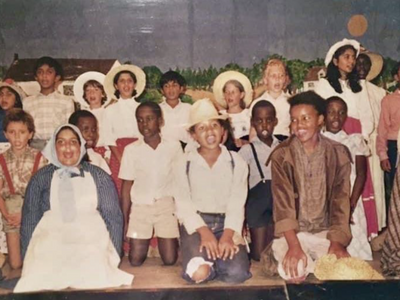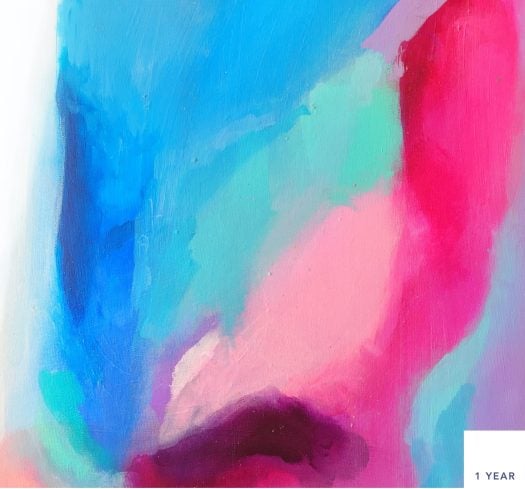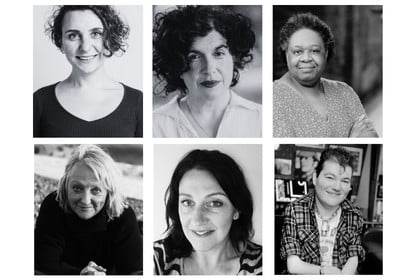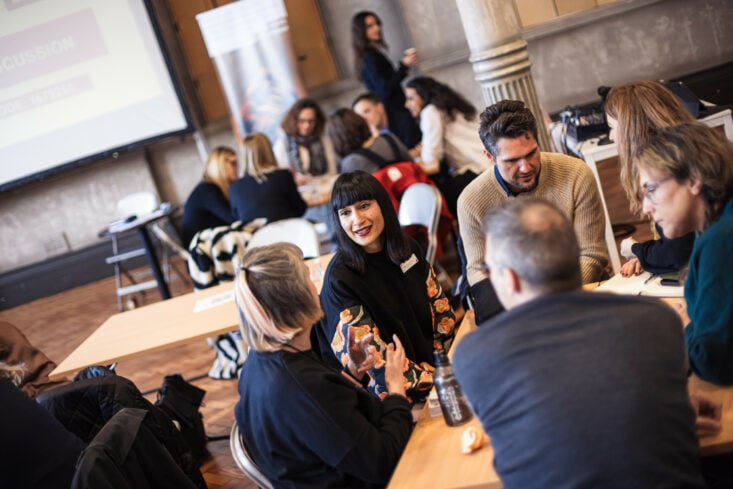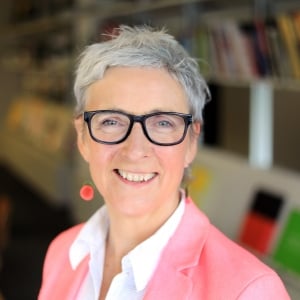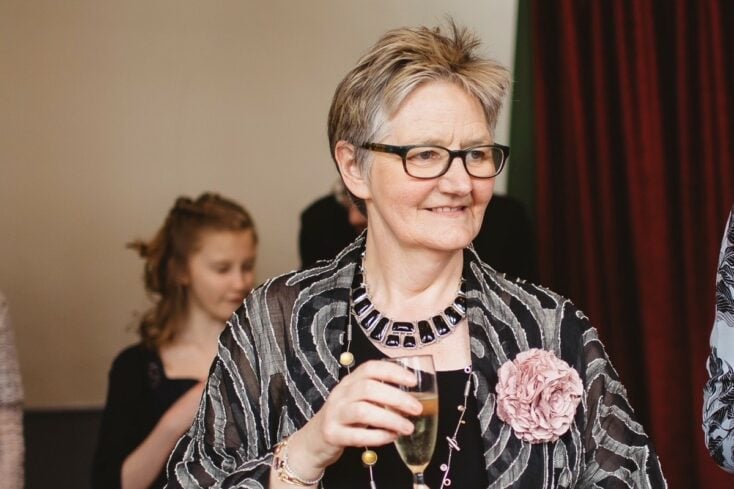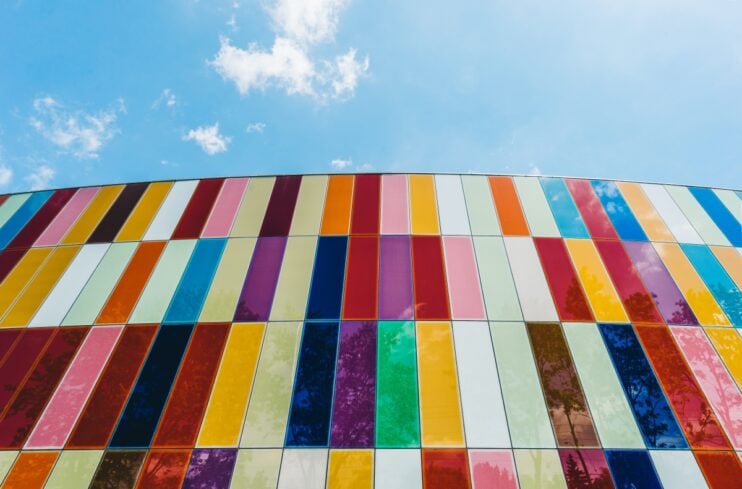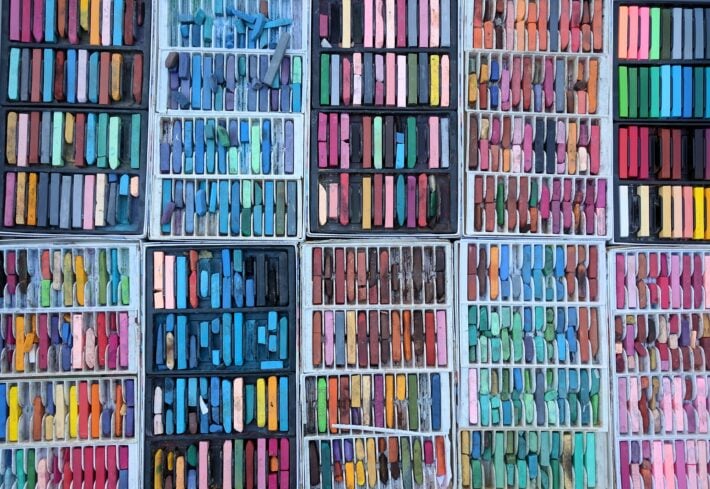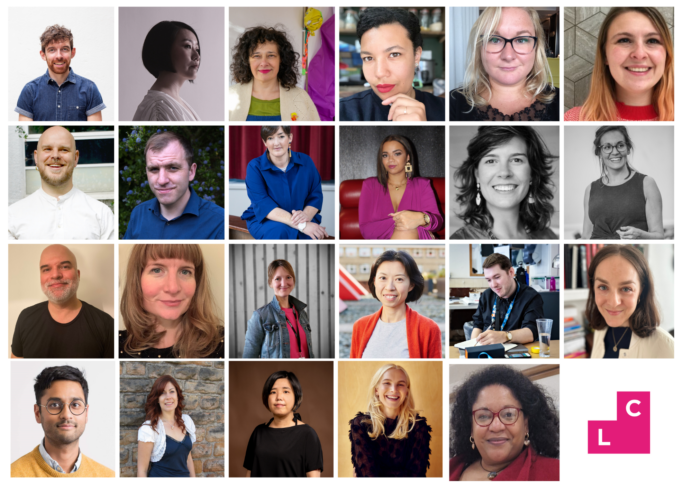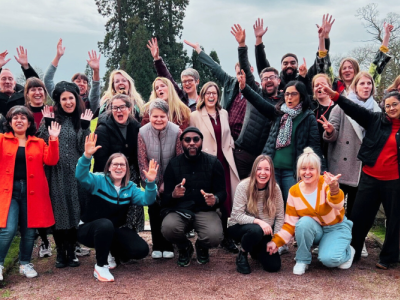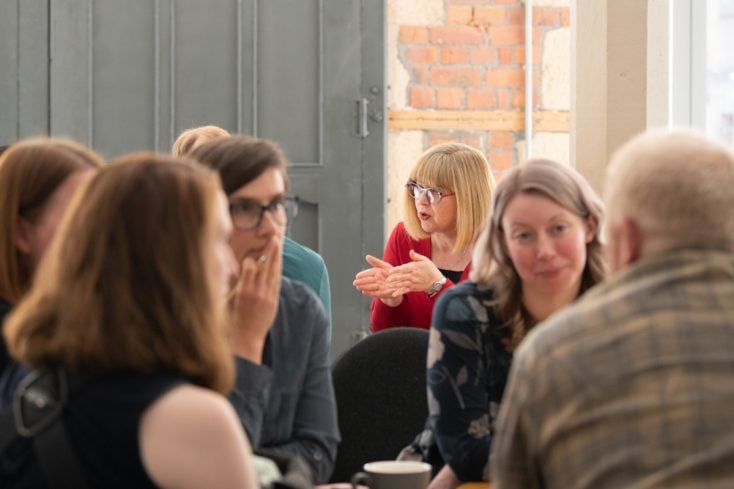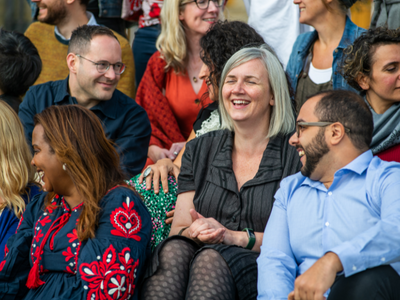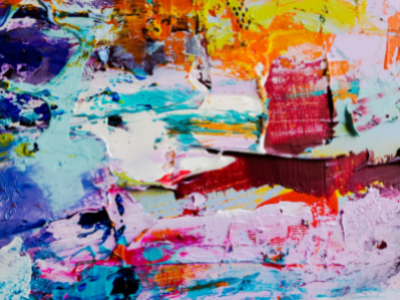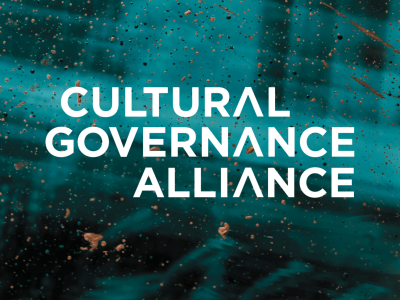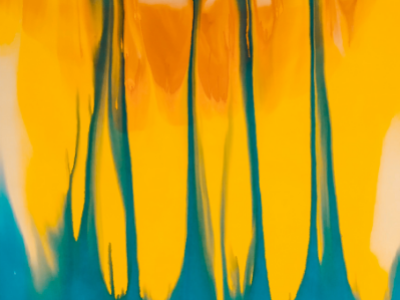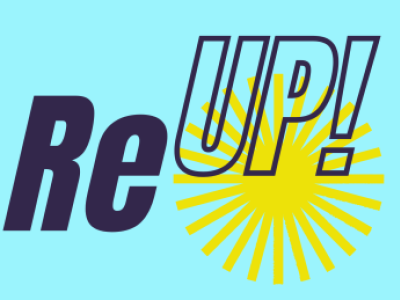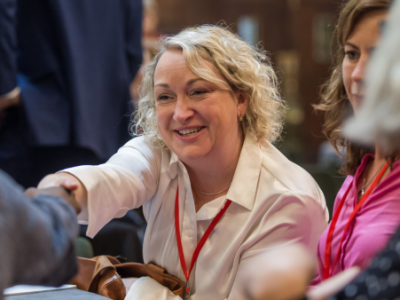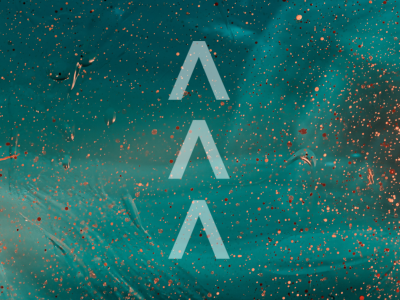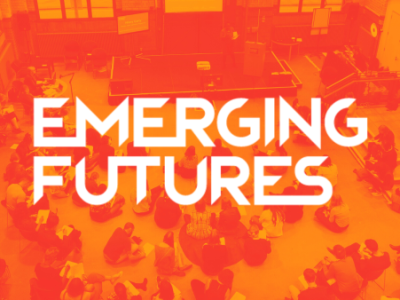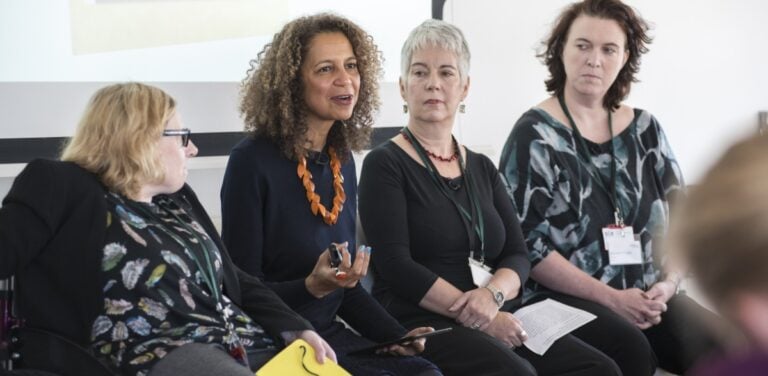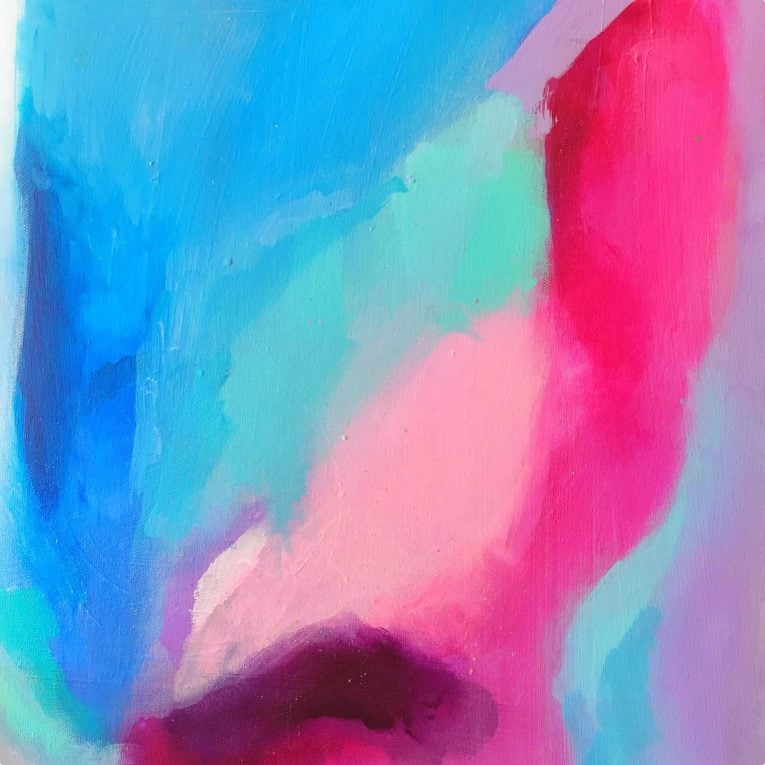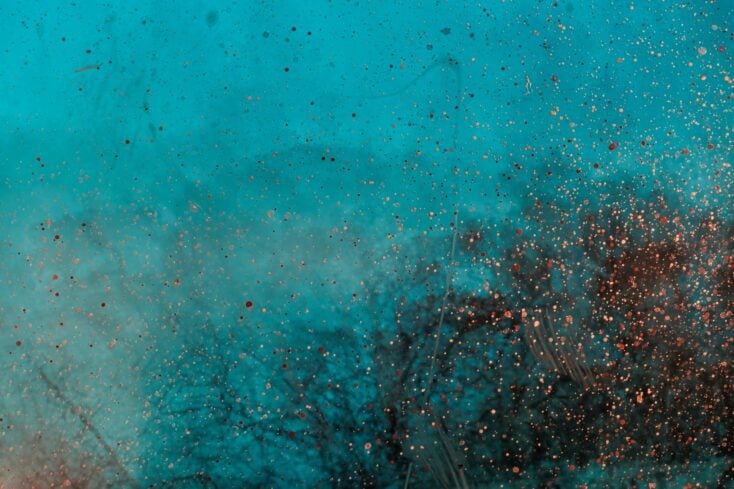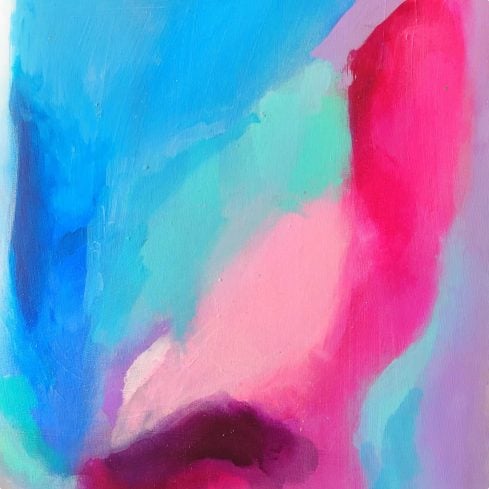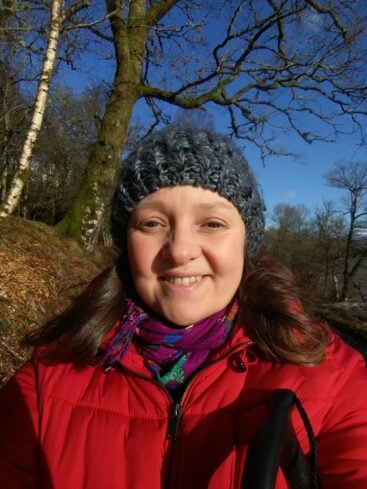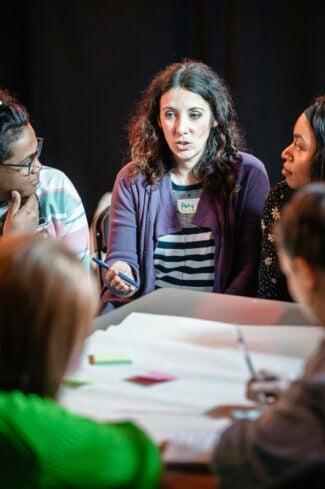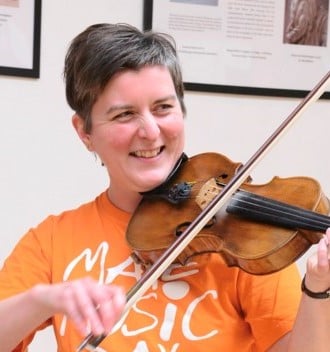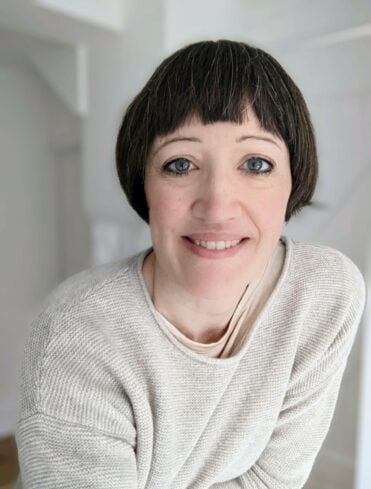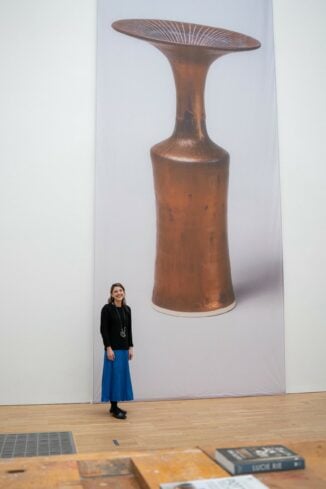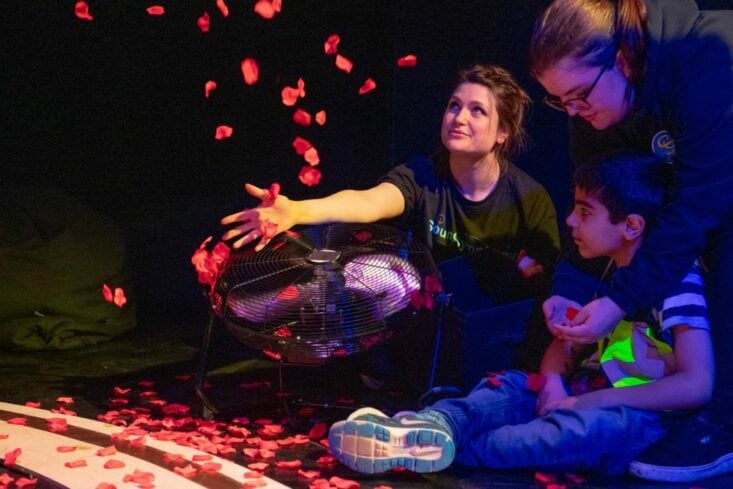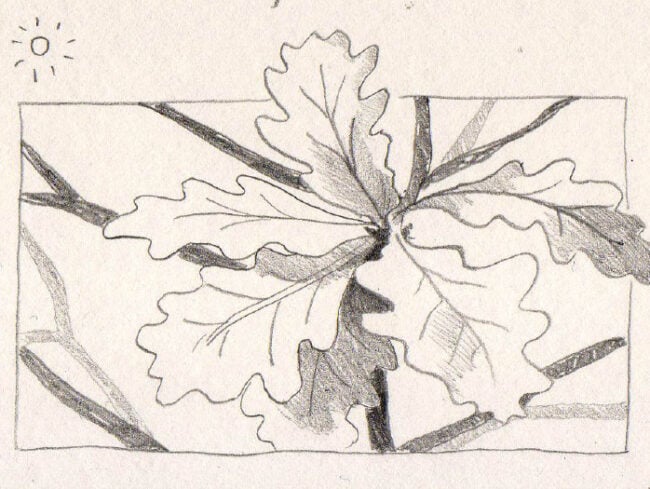Breaking the Mould
Clore Fellow 2021, Pooja Ghai is the artistic director at Tamasha theatre. This paper explores the ways in which her work breaks the mould.
I was born in Kenya to Kenyan-Indian parents and spent my first 14 years of life absorbing its scenic landscapes and vast wildlife reserves. Throughout Kenya’s history settlers from the continent as well as all over the world made their home there. Arab merchants established trading posts in the 7th century and the Portuguese took control of coastal trading in the early 16th century. The 1850’s saw the arrival of European explorers, and Kenya became a British colony in 1895. The classrooms I sat in were filled with children from all over the Globe, we were surrounded by so much diversity, and that was the norm. Kenya’s cultural values are founded in industriousness, hospitality, diversity, respect, education, warmth and reciprocity. We learnt from each other, played together, worked together, celebrated each other. Sounds idyllic right? It was. My defining moment in theatre came at the age of 11 when I landed the role in our school play. I fell in love with the power and impact storytelling could make on the audience and on the team who had worked lovingly to bring it to life. The questions it brought up, the conversations it inspired, the shared learning of another’s experience reflecting an experience of your own. That moment when the personal becomes the universal. The catharsis was magical. There was a sense of equity and collaboration. A shared creation and vision. I couldn’t imagine it any other way, and I was hooked.
I came to England in the 1980’s and the understanding of who I was and my place in the world changed dramatically. My identity would be called into question, and often times I struggled to belong. It was confusing and alienating being the only person of colour in the room and managing everyone else’s perceptions of who I was, as well as my own. Thankfully my curiosity in human nature and my passion for storytelling kept me forging ahead to find my community, hone my craft and create the stories that inspired me as an artist. When I began my professional journey as an actor in the late 1990’s, the struggle with my identity and sense of belonging continued. Auditions were limited, rarely were there invites from ‘recognised’ or ‘established’ theatre companies, and the roles on television were often defined by negative cultural stereotypes. It felt like the sector had a lot of work to do to become more inclusive, and apparently, this was progress. My mind boggled. How could progress be so slow? What could we do to break the mould?
There had been moments for diversity in the 80’s and 90’s where seminal TV shows like the Desmond’s, The Real McCoy and Goodness Gracious Me crossed over into the mainstream and were loved by audiences around the country. But they didn’t last long. They seemed to be relegated into non-existance as quickly as they found their success. Theatre companies like Tamasha, Talawa, New Earth and RIFCO were formed through the 80’s and 90’s dedicated to platforming stories from the lived experiences of global majority artists. Companies like these were responding to the desperate need for change and greater inclusion, but making progress and crossing into the mainstream is still, to this day, too measured.
Despite the tireless work done by so many, the theatre sector appeared stuck in a status quo, where it defined excellence through the European lens or a Western gaze. Stories from the migrant diaspora’s that encapsulated our colonial and post-colonial histories were relegated to the fringes or deemed to be too much of a risk.
As a sector we began to address the changes needed and challenge the leadership structures that were overwhelmingly white and male. Change has been incremental with more women and people of colour taking up leadership positions, but we still had far to go in achieving a truly inclusive sector. In 2012 we saw a shift in representation on our stages…but those working in the organisations and behind the scenes remained overwhelmingly white.
Nearly a decade later, Brexit, the pandemic and the murder of George Floyd prompted the arts and cultural sector to readdress the institutionalised racism that was harming staff, creatives and audiences around the country. Equality Diversity and Inclusion training is now embedded in institutions around the world. This is an encouraging step in shifting the culture and psyche of organisations that have been built on white supremist structures. The danger however, is the tokenistic initiatives that provide the right tick-box for the organisation, but remain an unsafe environment for those working there because of the entrenched behaviours that disadvantage them.
Global majority companies have been in a state of competition, even if unwittingly, because we were all fighting for the same small ‘piece of the pie’. Simply put it felt like ethnically diverse artists were always going to be two steps behind our white counterparts. Brexit, the pandemic and the murder of George Floyd highlighted the racial violence taking place globally. The world was shutting down around us. There was little or no income for freelancers. Theatres were empty, societies were becoming more polarised. The government didn’t support the arts and cancel culture was posing a huge threat to artistic freedom
The world reeled as it paused.
The gift bestowed on us was the time to think and reflect on the sector we wanted to see when we came out of the chaos. How could we grow and flourish when we had so many things stacked against us? What did a cultural sector look like when we came out of this? Who decided which stories to tell – and who was good enough to tell them? What defined ‘excellence’? Who defined which audiences to serve and which communities to engage with? Who was holding the power? To answer some of these questions, we needed to understand how the money was disseminated.
Research from the Arts Council in 2015 found that people of colour accounted for only 5% of the employees in some London theatres, in a city where more than 40% of people are from a global majority background.
2.4% of regular arts funding goes to global majority companies, when the global majority population is 14%.
Our artists needed more financial backing and support from our established institutions and our Government. Another compounding feature of organisations dedicated to global majority artists is this perennial status they hold as ‘emerging’. Tamasha has been in existence for nearly 35 years. A company that has worked tirelessly to platform and develop Global Majority artists so that they were not left in the shadows. How is it that there has been little or no increase in funding, providing no support to grow the organisation and to broaden the reach of its work?
These were difficult conversations and hard truths to hear, but there was something inspiring about the collective voice that was forming. It felt like there was a tangible shift and a greater unified force to advocate for change. I was hopeful for the future and I could see my role as a leader within it.
I applied for various leadership positions before joining the team at Tamasha. The majority of those that came up were with white-led organisations. They were resourced and funded well, facilitating progressive growth for the company. I wanted this opportunity and visibility for Global Majority artists. Through the interview process, I was confronted by imposter syndrome and questioned my values and ability. I was being interviewed by boards and executive teams that were majority white. The overwhelming feeling I was left with was that I didn’t belong, I wasn’t ready, or I wasn’t good enough. This was not going to plan. I knew I had something to offer as a leader, but when I walked into these rooms and I interviewed for the job – the confidence drained away, and I couldn’t stand strong in my voice and bold in my vision. I could see that I needed to build strategies to manage these emotions. I would benefit from some coaching on interview technique and confidence. I needed to let go of my own baggage and de-colonise my mind to understand the impact these power structures and authority had on me. I also knew I was not alone in this. Many of my ethnically diverse peers had talked of the same feelings when walking into rooms that were majority white, and how disempowered they felt.
As colonial migrants, we have often struggled with a perceived identity or an imposed identity of who we are. Each generation goes further into exploring their relationship with the countries we call home and our connection to the land. Some of us were not born in our motherland and don’t know our mother tongue. We have spent our lives assimilating into other cultures and countries. In light of this, we cannot deny that our histories are inextricably linked. In his book Empireland, Sathnam Sanghera talks about the controversial legacy of Empire and why we need to understand it, make it part of the national discourse and teach it in our schools. He argues that imperialism is everywhere, although we may choose not to see it. He goes on to highlight how this amnesia allows the British to deny their modern, multicultural identity. What we need to understand he says, is that both deliberately and unconsciously, the empire was “one of the biggest white supremist enterprises in the history of humanity and still shapes British society in countless ways”. He goes on to say that “we’re a multicultural society because we had a multicultural empire… by learning in depth about our imperial history, we will begin to understand our past behaviours so that we don’t repeat them”.
During my Clore Fellowship, the idea of authentic leadership kept resonating. For me, it was about collaborative, compassionate and bold leadership, founded in values of creativity, kindness, love, curiosity and care. What did that really look like in practice?
Then the job for Tamasha came along. Here was a touring company, dedicated to platforming artists who were historically marginalised. The team consists of people from the Global Majority, our CEO is a woman of colour, the make-up of the board is majority ethnically diverse. It is a breath of fresh air. Conversations begin from a different perspective, they are nuanced and dynamic, collaborative, and curious. We are empowered that our ambitious goals to platform and elevate the company, our artists and increase audience engagement could finally be a possibility. The space is free of the mainstream stereotypes and the marginalization that permeate so many other societal spaces. We can be our authentic selves without insecurities and judgements skewing our conversations, and we can visualise playing a hand in achieving a critical mass of global majority artists working in the sector.
This feels like breaking the mould.
Themes Inclusive Leadership Practice Qualities of Leadership
